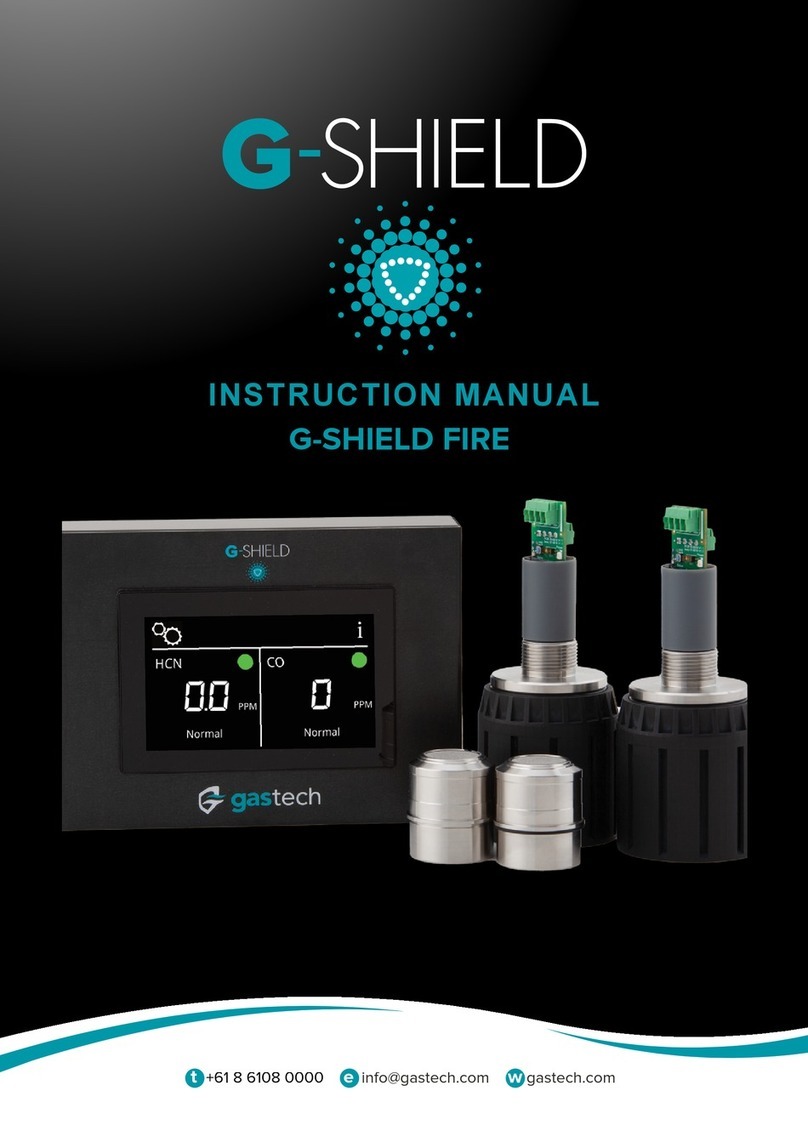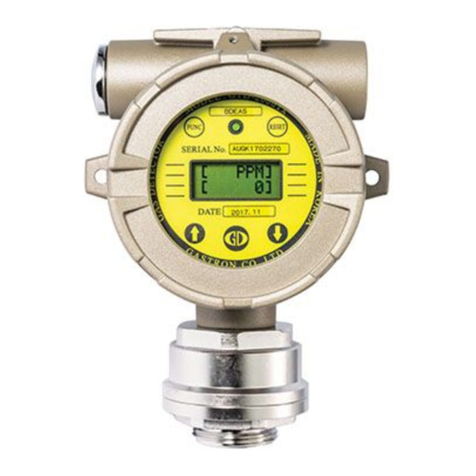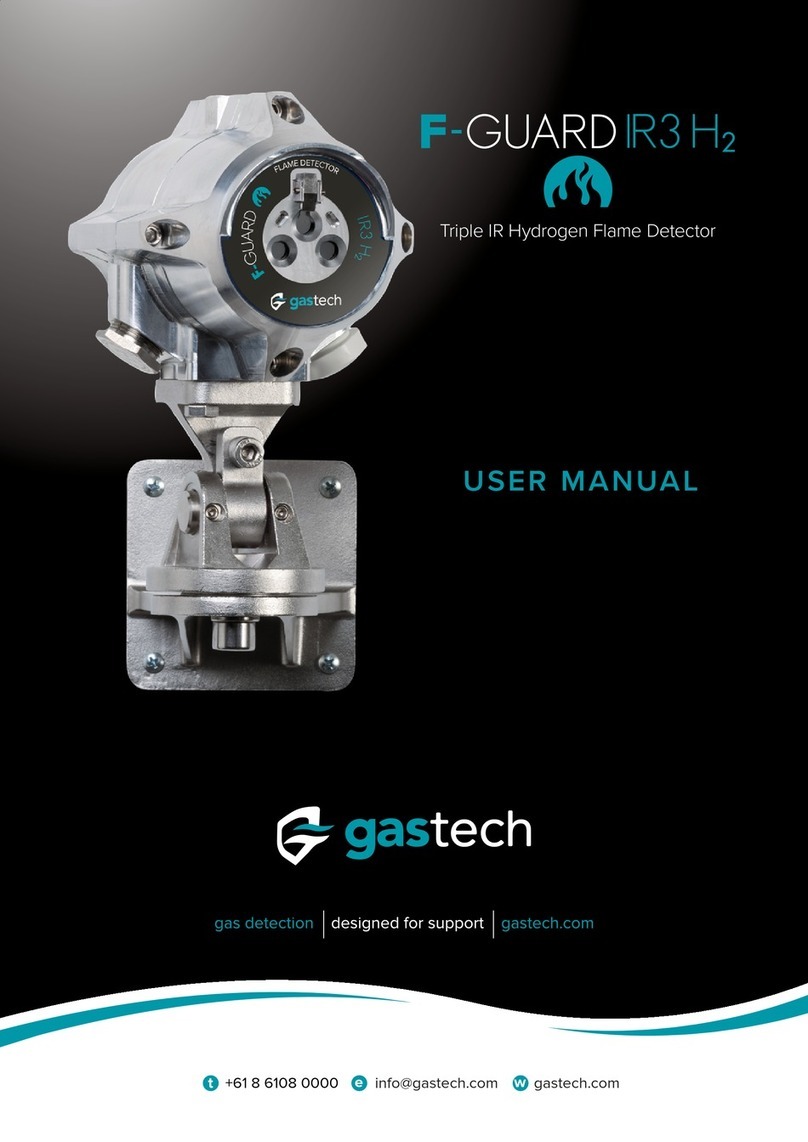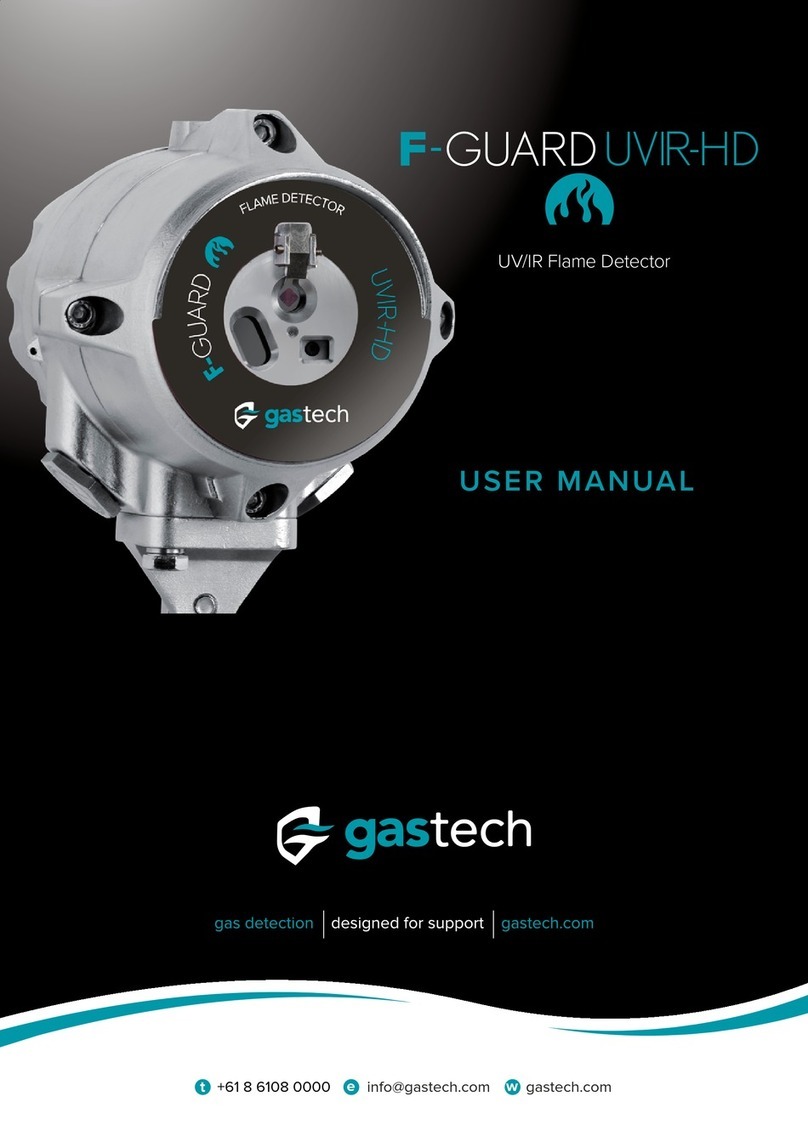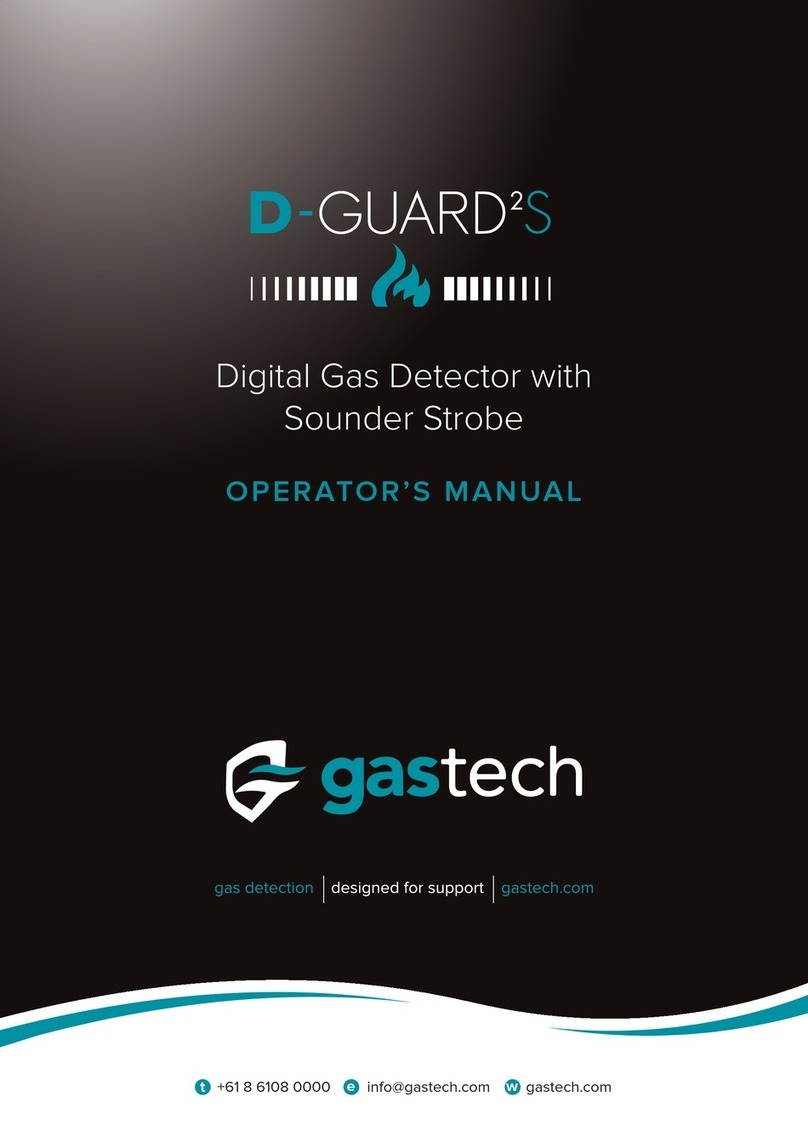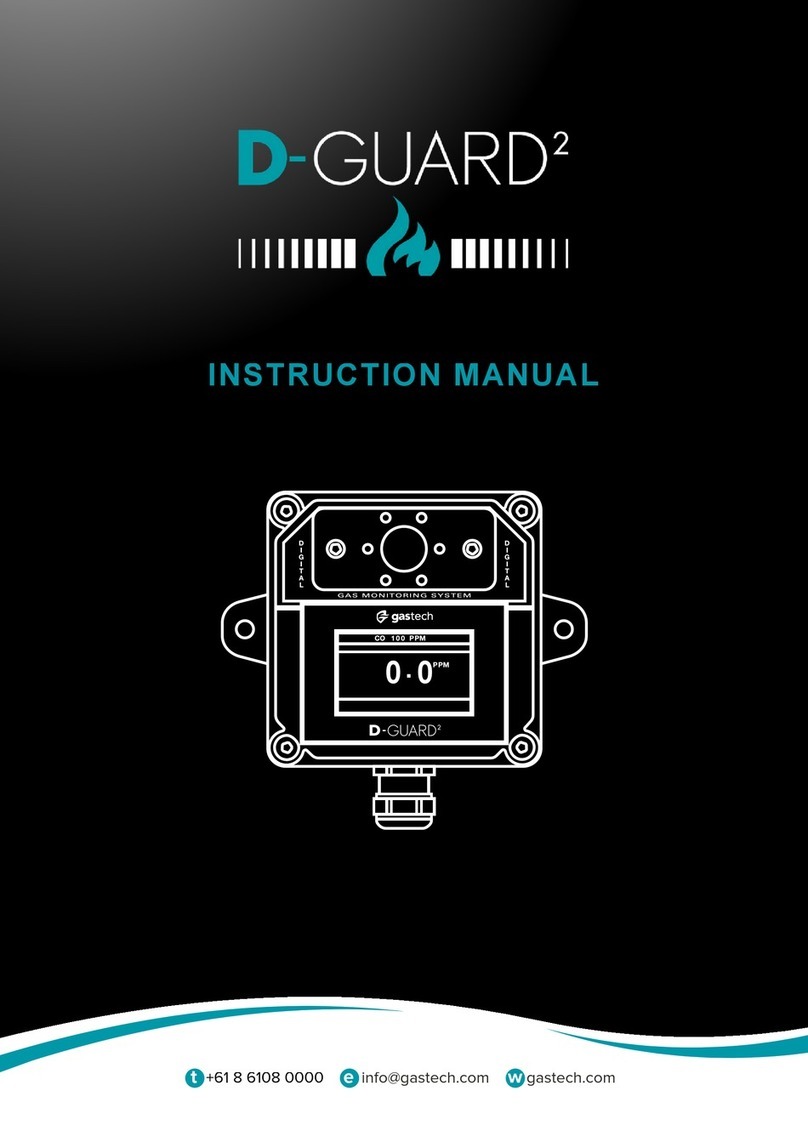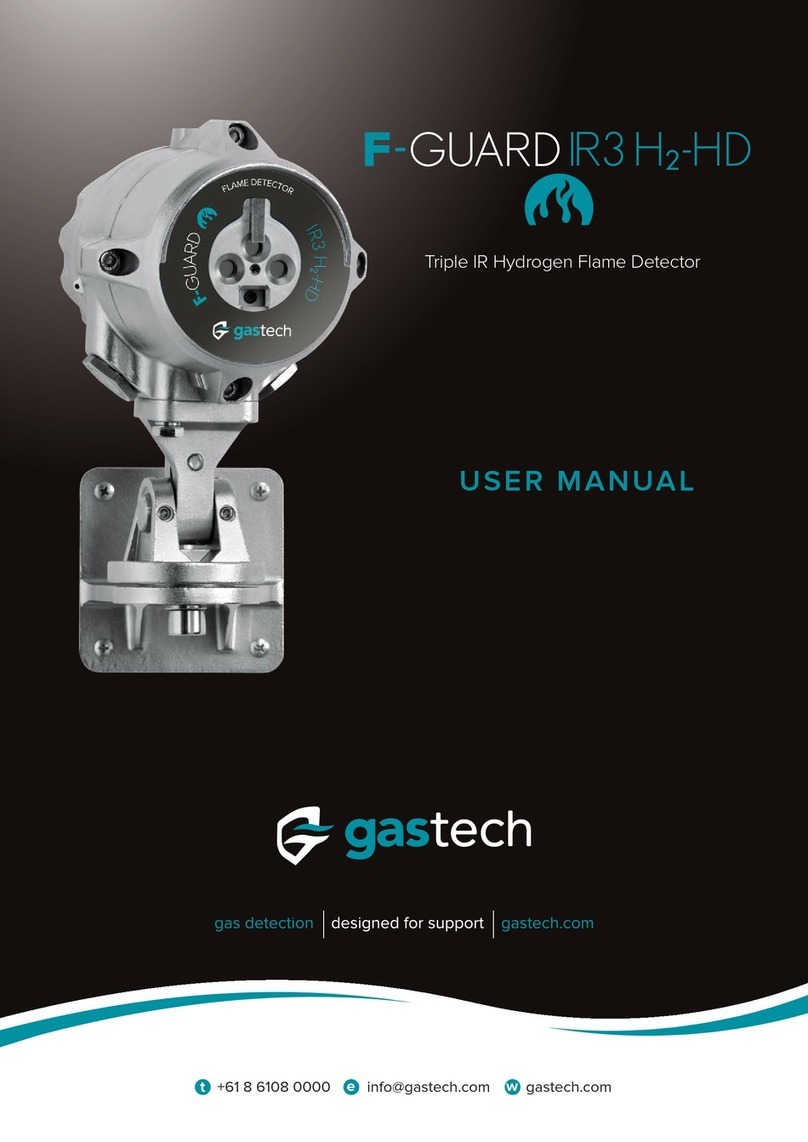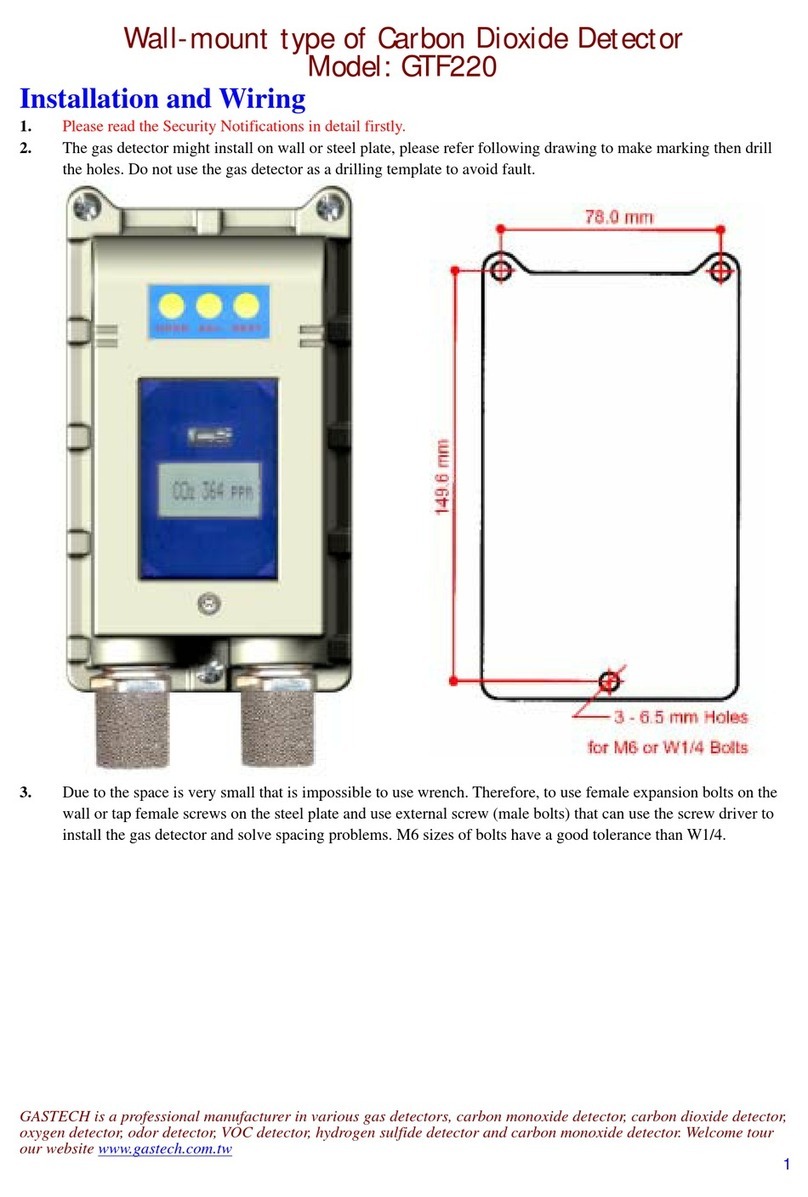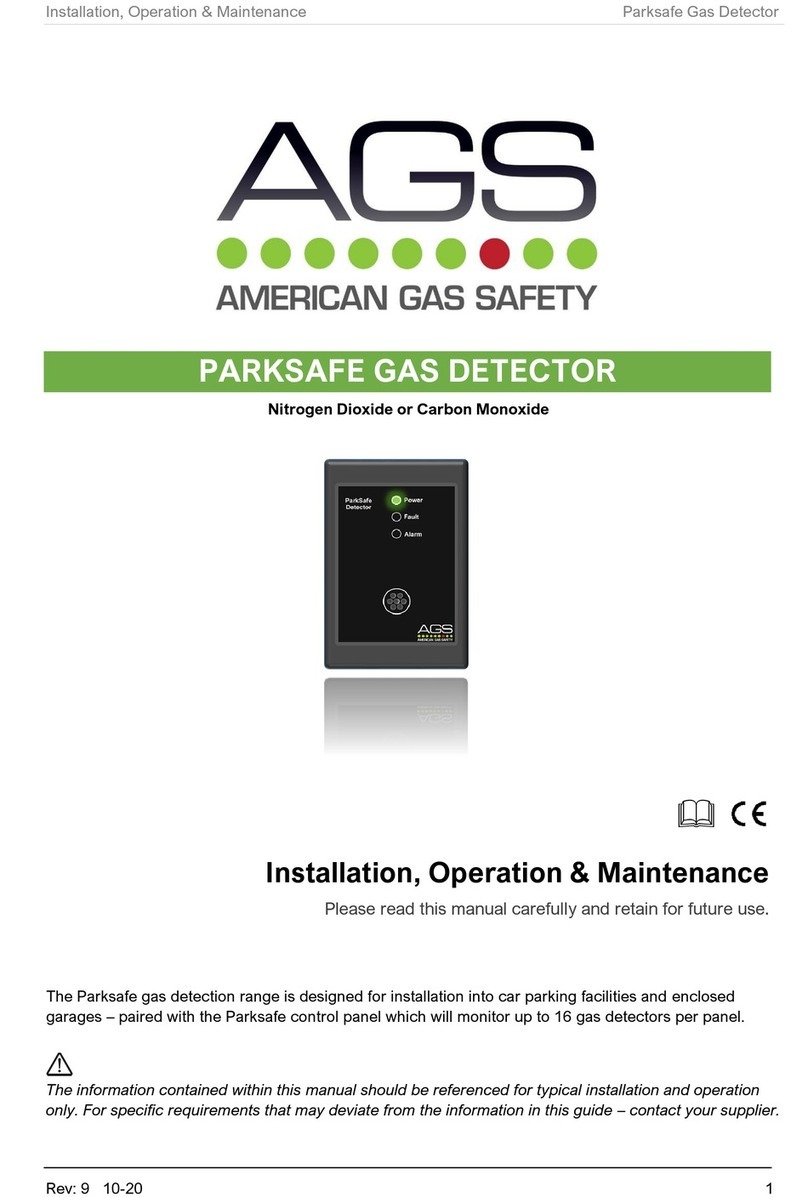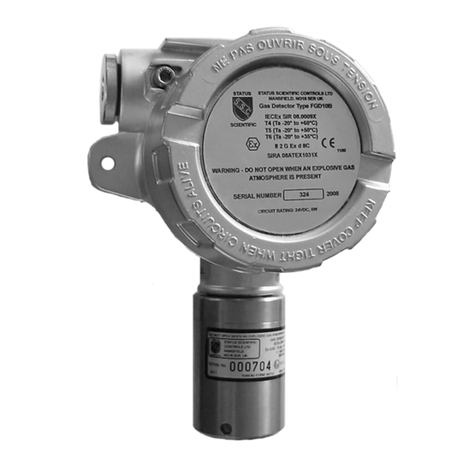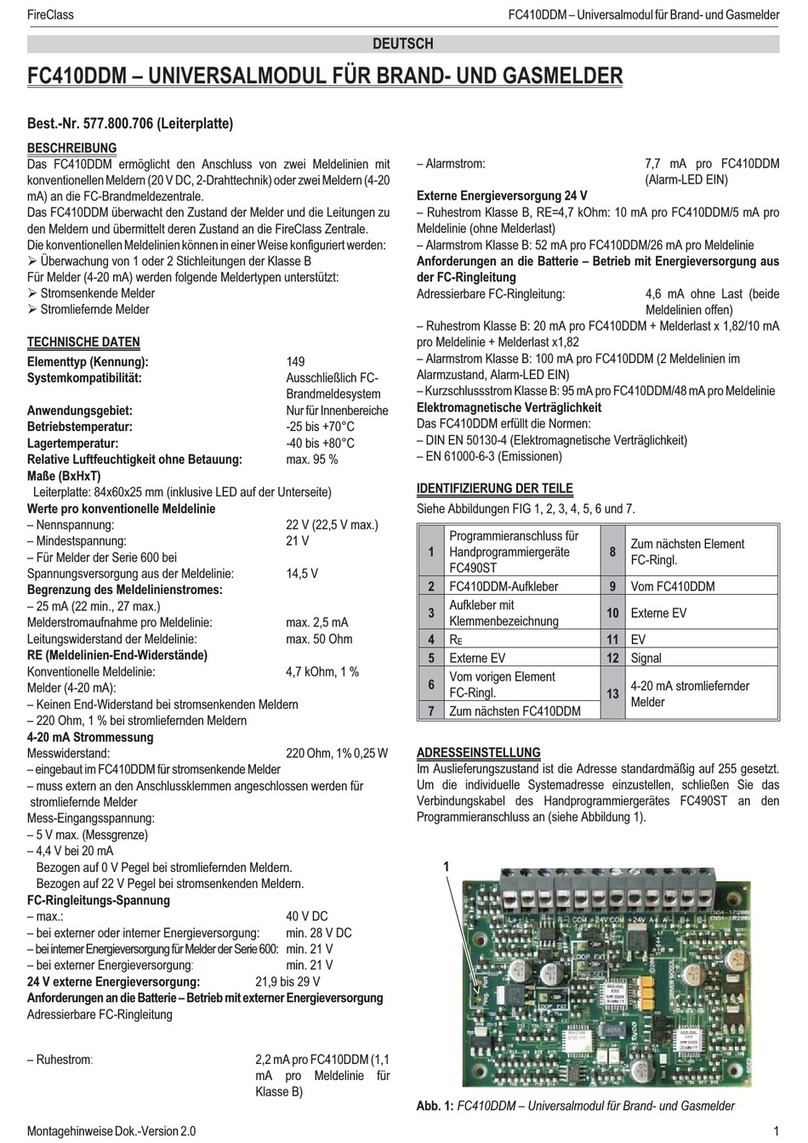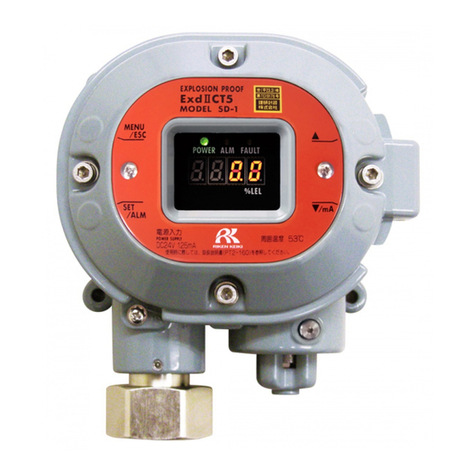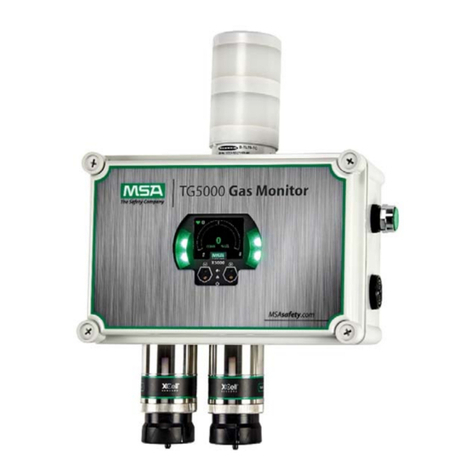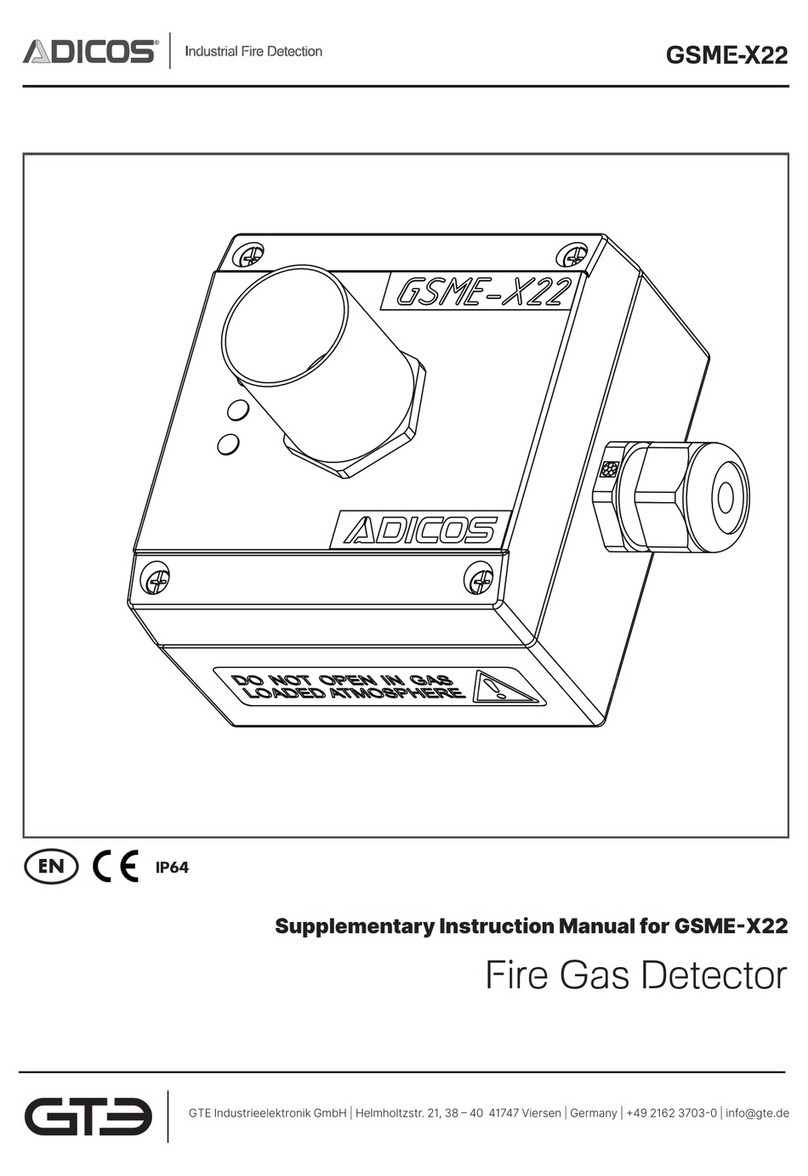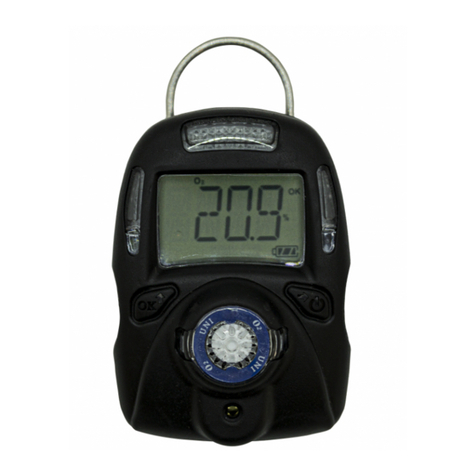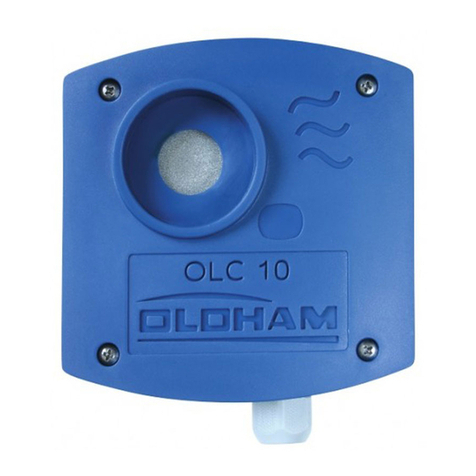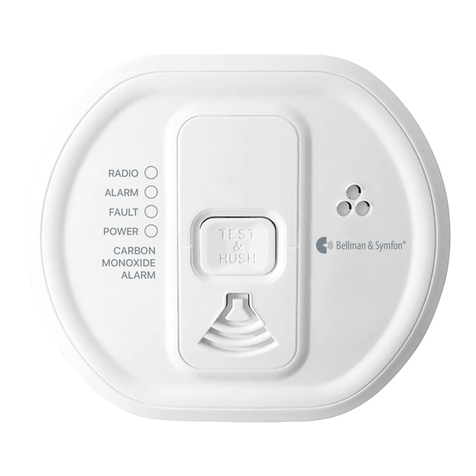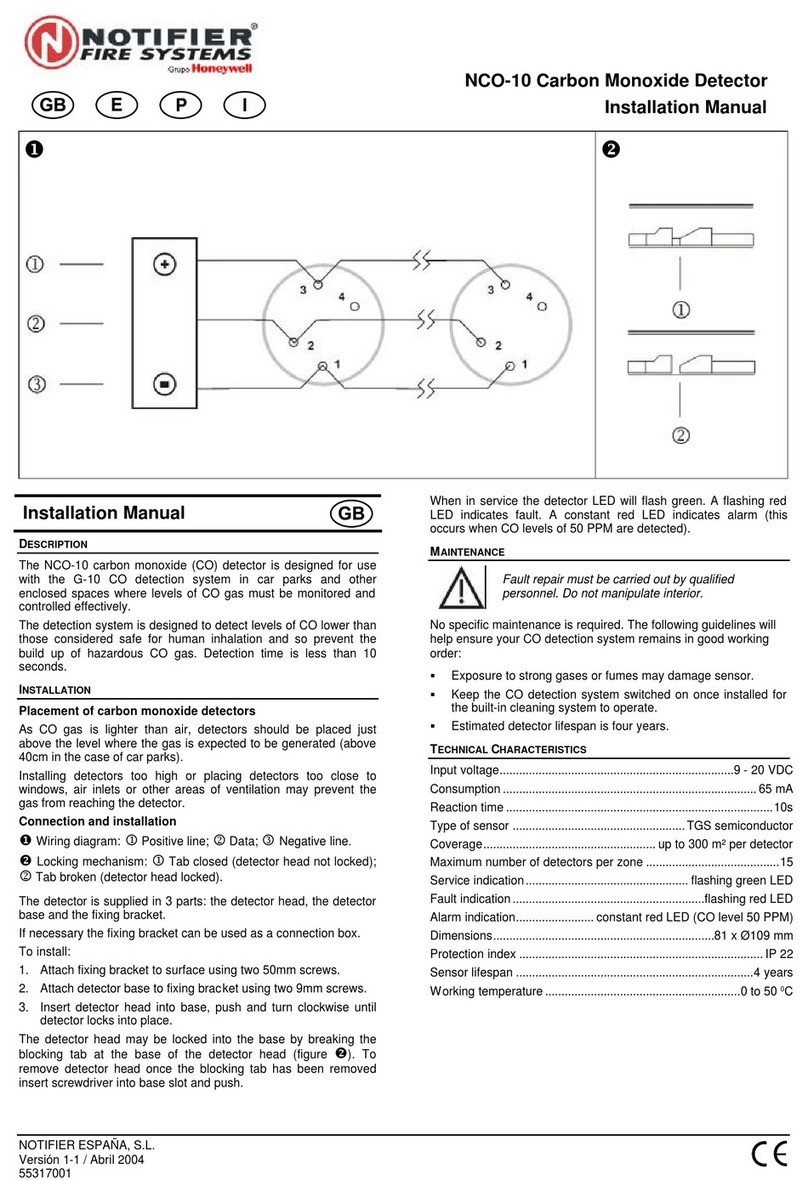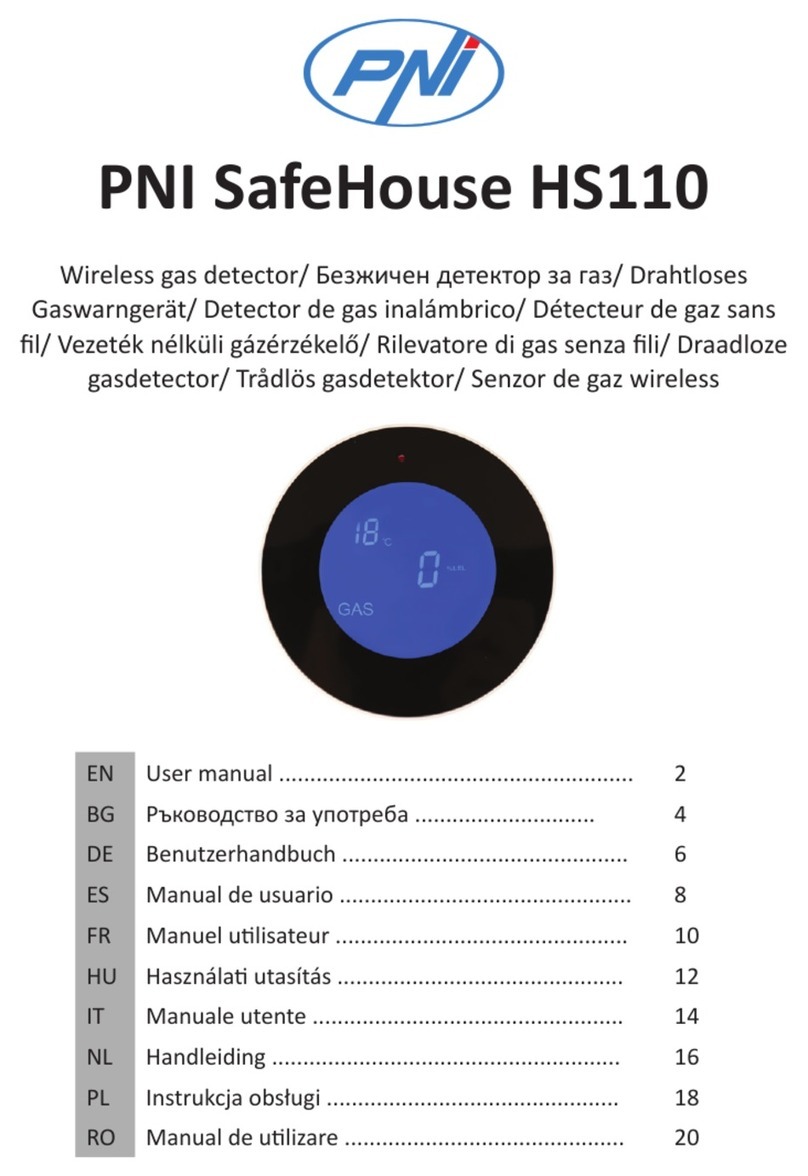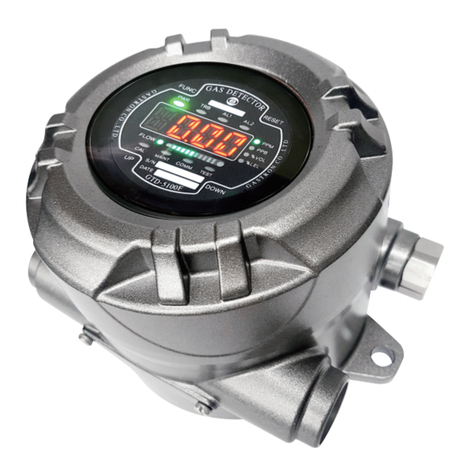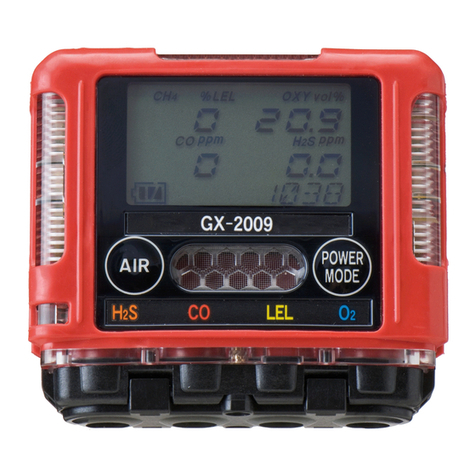
18
Appendix A: Calibration Frequency
One of the most common
questions that we are asked at
Biosystems is: “How often should
I calibrate my gas detector?”
Sensor Reliability and Accuracy
Today’s sensors are designed to
provide years of reliable service. In
fact, many sensors are designed
so that with normal use they will
only lose 5% of their sensitivity per
year or 10% over a two-year
period. Given this, it should be
possible to use a sensor for up to
two full years without any
significant loss of sensitivity.
A lot of sensors indeed do last that
long with only minimal loss of
sensitivity. However, there are a
number of reasons why a sensor
may unexpectedly lose additional
sensitivity or even fail to respond to
gas. Such reasons include
desiccation, poisoning, physical
restriction of airflow, overexposure,
leakage, and mechanical damage
due to dropping or immersion.
Verification of Accuracy
With somany reasons why a
sensor can lose sensitivity and
given the fact that dependable
sensors can be key to survival in a
hazardous environment, frequent
verification of sensor performance
is paramount.
There is only one sure way to verify
that a sensor can respond to the
gas for which it is designed. That is
to expose it to a known
concentration of target gas and
compare the reading with the
concentration of the gas. This is
referred to as a “bump” test. This
test is very simple and takes only a
few seconds to accomplish. The
safest course of action is to do a
“bump” test prior to each day’s
use. It is not necessary to make a
calibration adjustment if the
readings are between 90% and
120% of the expected value. As an
example, if a CO sensor is checked
using a gas concentration of 50
PPM it is not necessary to perform
a calibration unless the readings
are either below 45 PPM or above
60 PPM.
Lengthening the Intervals
between Verification of Accuracy
We are often asked whether there
are any circumstances in which the
period between accuracy checks
may be lengthened.
Biosystems is not the only
manufacturer to be asked this
question! One of the professional
organizations to which Biosystems
belongs is the Industrial Safety
Equipment Association (ISEA). The
“Instrument Products” group of this
organization has been very active
in developing a protocol to clarify
the minimum conditions under
which the interval between
accuracy checks may be
lengthened.
A number of leading gas detection
equipment manufacturers have
participated in the development of
the ISEA guidelines concerning
calibration frequency. Biosystems
procedures closely follow these
guidelines.
If your operating procedures do not
permit daily checking of the
sensors, Biosystems recommends
the following procedure to establish
a safe and prudent accuracy check
schedule for your Biosystems
instruments:
1. During a period of initial use of
at least 10 days in the
intended atmosphere, check
the sensor response daily to
be sure there is nothing in the
atmosphere that is poisoning
the sensor(s). The period of
initial use must be of sufficient
duration to ensure that the
sensors are exposed to all
conditions that might have an
adverse effect on the sensors.
2. If these tests demonstrate that
it is not necessary to make
adjustments, the time between
checks may be lengthened.
The interval between accuracy
checking should not exceed 30
days.
3. When the interval has been
extended the toxic and
combustible gas sensors
should be replaced
immediately upon warranty
expiration. This will minimize
the risk of failure during the
interval between sensor
checks.
4. The history of the instrument
response between verifications
should be kept. Any
conditions, incidents,
experiences, or exposure to
contaminants that might have
an adverse effect on the
calibration state of the sensors
should trigger immediate re-
verification of accuracy before
further use.
5. Any changes in the
environment in which the
instrument is being used, or
changes in the work that is
being performed, should
trigger a resumption of daily
checking.
6. If there is any doubt at any
time as to the accuracy of the
sensors, verify the accuracy of
the sensors by exposing them
to known concentration test
gas before further use.
Gas detectors used for the
detection of oxygen deficiencies,
flammable gases and vapors, or
toxic contaminants must be
maintained and operated properly
to do the job they were designed to
do. Always follow the guidelines
provided by the manufacturer for
any gas detection equipment you
use!
If there is any doubt regarding your
gas detector's accuracy, do an
accuracy check! All it takes is a few
moments to verify whether or not
your instruments are safe to use.
One Button Auto Calibration
While it is only necessary to do a
“bump” test to ensure that the
sensors are working properly, all
current Biosystems gas detectors
offer a one button auto calibration
feature. This feature allows you to
calibrate a Biosystems gas
detector in about the same time as
it takes to complete a “bump” test.
The use of automatic bump test
and calibration stations can further
simplify the tasks, while
automatically maintaining records.
Don't take a chance
with your life.
Verify accuracy frequently!
Biosystems Applications Notes are
available at the Biosystems website
at
http://www.biosystems.com




















